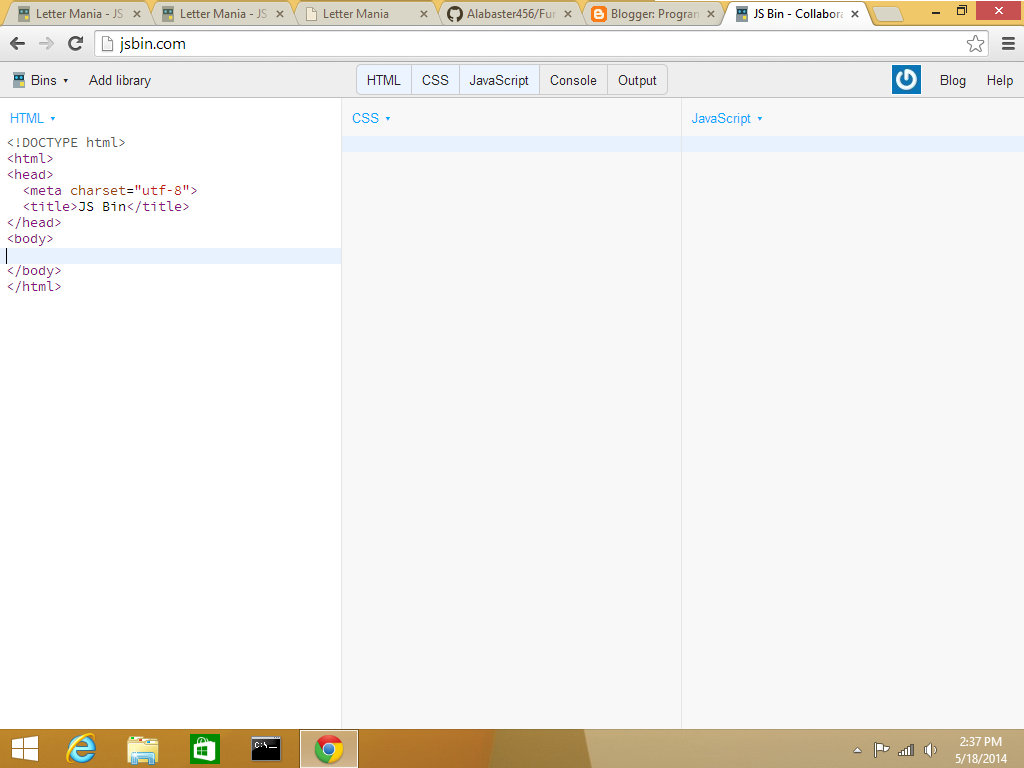Java
Java is coffee. You brew it to your personal taste and add sugar if wanted, then sip with milk or either by it's perfect original taste. Where do the beans come from? No one knows. Only the computer produces such a magnificent, flavorful..
No really, let's cut to the chase. Java is not coffee (in the programming world!). Java is a powerful and common object-oriented language that actual developers use to create devastating mobile apps and games that you see (without realizing it) to this day. The popularity of Java is increasing, because more people are looking towards it's simplicity unlike other high-level programming languages (like C, C++ or maybe even Objective-C). I honestly wouldn't know much about C or C++ being complex, but I do know that Java does seem simple from my own personal experience. Take note that the fundamentals of Java came from C++, but the creators improved the syntax of Java so that it could be more simple for programmers to use. And so far, they done a great deal to society by doing so.
Aside question: Why did they use coffee as their logo for Java?
This is kind of a general question, but no one really knows. I actually did my own research (across the web) and I haven't found a good solution yet, so I'm not sure. The creator probably just came up with the name while sipping actual Java. Besides, from what I heard, programmers run on coffee. But I don't..
JavaScript
JavaScript is a popular, object oriented, web-based programming language used by Web Developers. People use this language to make websites created out of HTML and CSS interactive. Without doubt, you probably seen JavaScript in action, because it's nearly everywhere across the web browser. Input boxes, check boxes, radio buttons - all of that stuff is powered by JavaScript. The power of this language is great, but it isn't as great as Java. You definitely wouldn't use this programming language to create mobile apps or games unless they're web-based. This is not a language to look into if you aren't interested in web development, because that's basically where that direction is heading.
The good thing about this language is that everyone is learning it across the world, so finding open-source projects or tutorials is very easy with just a simple search (unlike Java). You wouldn't have much trouble learning this language either because JavaScript is more simpler to get into and less complex. The only part of JavaScript that might confuse is the object-oriented part, because it takes a lot of effort to utilize the code and remember it's methods. But other than that, you're definitely good to go. This was actually my first language that I had gotten into thinking it was for mobile development, but I realized it wasn't through my brother and by research. It was kind of disappointing on my part, but I'm glad that I learned this language as a first - I'll talk about that in another article, perhaps.
Listing The Difference Between The Two
I probably don't have to list the difference for you guys, but just in case you're unsure - and for the sake of this post - I'll break it down for you. Once you're finished reading the difference, you should probably look exactly like that meme above. Jussayin'.
JavaScript
- Popular web-based programming language
- Used to make websites interactive
- Can be used freely on your browser, with no download needed
- Object oriented
- Less complex syntax than Java
- Leads to Web Development as a career
- Easier to learn on the web due to popularity
Java
- Very powerful, common programming language
- High-level programming language
- Used to make mobile apps and games
- Cannot be freely used on your browser - you need to download an IDE
- Object-oriented
- More complex syntax than JavaScript, but simpler than C++
- Leads to Software Development as a career
- Not easy to learn using the web as a source, but popular among the web
Wow, look at the difference! If you aren't amazed or even the slightest astonished, you have to be crazy. It's quite easy to say that Java isn't JavaScript now because they have NO similarities at all. And I'm not saying this to belittle our web-based language JavaScript, but it is absolutely nothing compared to Java. The only reason this topic is ever brought up in the programming community is because people can't distinguish the difference between the two due to the similar names. But trust me, the concept and design is totally different.
That's it! Feel free to comment if you have any questions or just want to throw out your opinion. It's fun to have active people willing to spread their knowledge, so don't be afraid not to.
See ya!




















